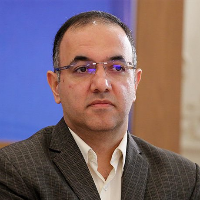Reading the Physical Structure of Mosques on How to Perceive, Behave and Measure Audience Attendance
Statement of Problem:
The mosque, as a place of behavior, establishes a deep connection with its audience. This connection has been an inseparable part of the mosquechr('39')s function for many centuries from the emergence of mosques until today.
Numerous factors play a role in the audiencechr('39')s behavioral and perceptual experiences in man-made spaces, including mosques. Among these factors, changes in shape, variety of types and physical structure in mosques are involved in the audiencechr('39')s behavioral and spatial experiences. In the last decade, we can see an increase in the formation of neighborhood mosques in Qazvin, but unfortunately most of these mosques lack the vitality, dynamism and the desired presence of the audience and have only become prayer spaces, which makes it impossible to create a connection between space and audience.
Aim of the research:
The purpose of this study is to explore the type of typology and body of mosques on the perception of the audience so that the spatial experiences of the audience are affected by the type of Carcio geometry, proportions, peer and class accesses and spatial hierarchy. On the other; The diversity and adaptability of activities and perceptual mediators affected by the body of mosques on the presence of the audience in the mosque have been studied.
In the research, first; Data collection, by recording events and fieldwork techniques, has been studied in three mosques with a traditional structure of the central courtyard and three mosques with a class structure in the city of Qazvin. Space with depthmap10 software has been used by using spatial layout indicators and since to evaluate the weight of components affecting how to perceive and behave qualitatively, the above method can not be used alone through the survey method and questionnaire design and data analysis by Amous22 statistical software Correlation analysis is performed and significant relationships are inferred between the involved variables.
The research findings indicate that the types and physical components of architecture such as; Distribution and interconnection, depth, spatial connection, arrangement and relationship of internal accesses to diversity, activity adaptability and also the type of audience perception according to perceptual mediators (needs and preferences of the audience) with the duration of the stop and the presence of mosque audience, create a strong and direct relationship.
-
Investigating the role of Intermediate Spaces in the Mass-Space System and how it Affects the Organization of Collective Performance (Case Study in the Middle Areas of Qazvin Mosques )
Mahsa Mirsalami *,
Journal of Environmental Sciences and Technology, -
The role of spatial organization indicators on the degree of sociability, with emphasis on physical-functional factors in mosques in Qazvin
MAHSA MIRSALAMI *, ALI OMRAMIPOUR
Hoviate shahr,



